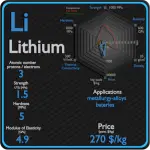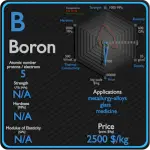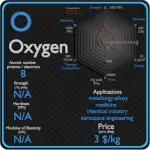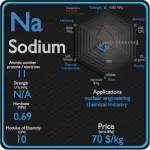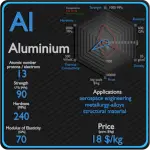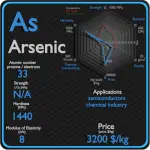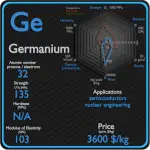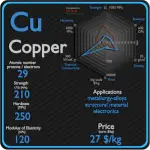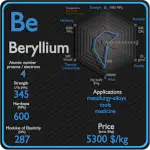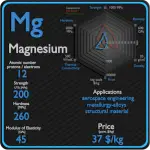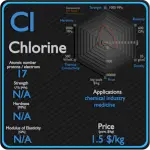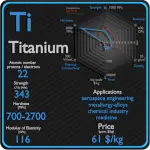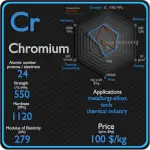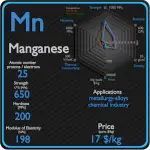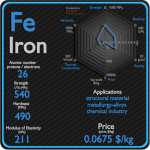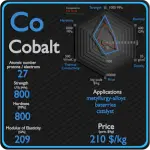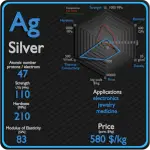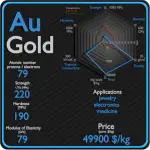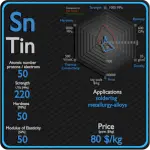This article contains comparison of key thermal and atomic properties of silicon and copper, two comparable chemical elements from the periodic table. It also contains basic descriptions and applications of both elements. Silicon vs Copper.
![]()
Silicon and Copper – About Elements
![]()
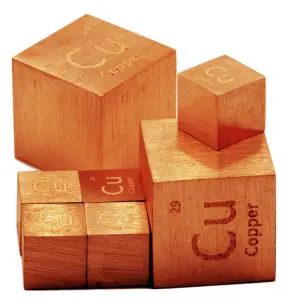
Source: www.luciteria.com
Silicon and Copper – Applications
Silicon
Most silicon is used industrially without being purified, and indeed, often with comparatively little processing from its natural form. Silicon is a vital ingredient in aluminum, steel, and iron alloys. It is added as a fluxing agent for copper alloys. In the form of clay and sand, it is used to manufacture bricks and concrete; it is a valuable refractory material for high-temperature work, for example, molding sands for castings in foundry applications. Silica is used to make fire brick, a type of ceramic. Silicate minerals are also in whiteware ceramics, an important class of products usually containing various types of fired clay minerals (natural aluminium phyllosilicates). An example is porcelain, which is based on the silicate mineral kaolinite. Traditional glass (silica-based soda-lime glass) also functions in many of the same ways, and also is used for windows and containers. Hyperpure silicon metal and doped hyperpure silicon (doping with boron, phosphorous, gallium, or arsenic) are used in solar cells, transistors and semiconductors.
Copper
Historically, alloying copper with another metal, for example tin to make bronze, was first practiced about 4000 years after the discovery of copper smelting, and about 2000 years after “natural bronze” had come into general use. An ancient civilization is defined to be in the Bronze Age either by producing bronze by smelting its own copper and alloying with tin, arsenic, or other metals. The major applications of copper are electrical wire (60%), roofing and plumbing (20%), and industrial machinery (15%). Copper is used mostly as a pure metal, but when greater hardness is required, it is put into such alloys as brass and bronze (5% of total use). Copper and copper-based alloys including brasses (Cu-Zn) and bronzes (Cu-Sn) are widely used in different industrial and societal applications. Some of the common uses for brass alloys include costume jewelry, locks, hinges, gears, bearings, ammunition casings, automotive radiators, musical instruments, electronic packaging, and coins. Bronze, or bronze-like alloys and mixtures, were used for coins over a longer period. is still widely used today for springs, bearings, bushings, automobile transmission pilot bearings, and similar fittings, and is particularly common in the bearings of small electric motors. Brass and bronze are common engineering materials in modern architecture and primarily used for roofing and facade cladding due to their visual appearance.
Silicon and Copper – Comparison in Table
| Element | Silicon | Copper |
| Density | 2.33 g/cm3 | 8.92 g/cm3 |
| Ultimate Tensile Strength | 170 MPa | 210 MPa |
| Yield Strength | 165 MPa | 33 MPa |
| Young’s Modulus of Elasticity | 150 GPa | 120 GPa |
| Mohs Scale | 7 | 3 |
| Brinell Hardness | 2300 MPa | 250 MPa |
| Vickers Hardness | N/A | 350 MPa |
| Melting Point | 1410 °C | 1084.62 °C |
| Boiling Point | 3265 °C | 2562 °C |
| Thermal Conductivity | 148 W/mK | 401 W/mK |
| Thermal Expansion Coefficient | 2.6 µm/mK | 16.5 µm/mK |
| Specific Heat | 0.71 J/g K | 0.38 J/g K |
| Heat of Fusion | 50.55 kJ/mol | 13.05 kJ/mol |
| Heat of Vaporization | 384.22 kJ/mol | 300.3 kJ/mol |
